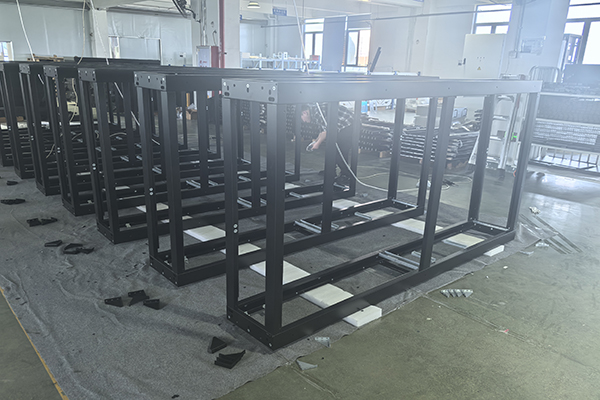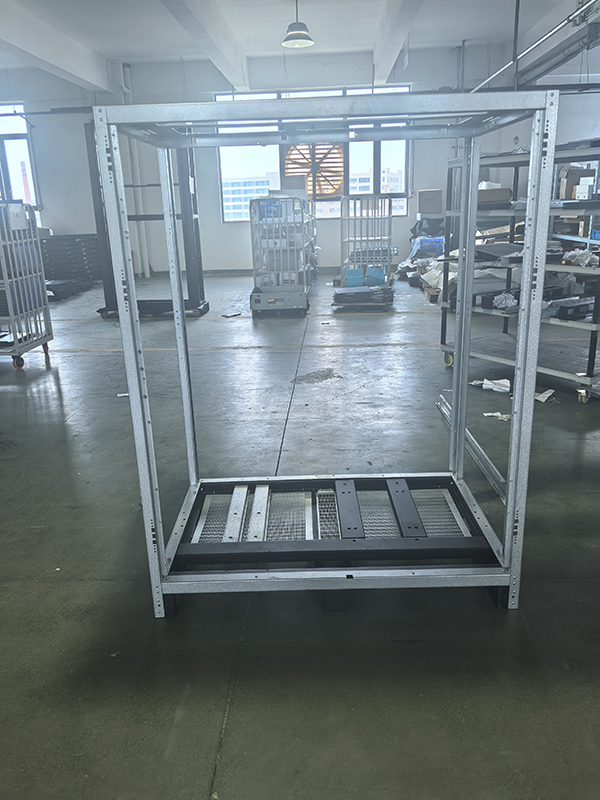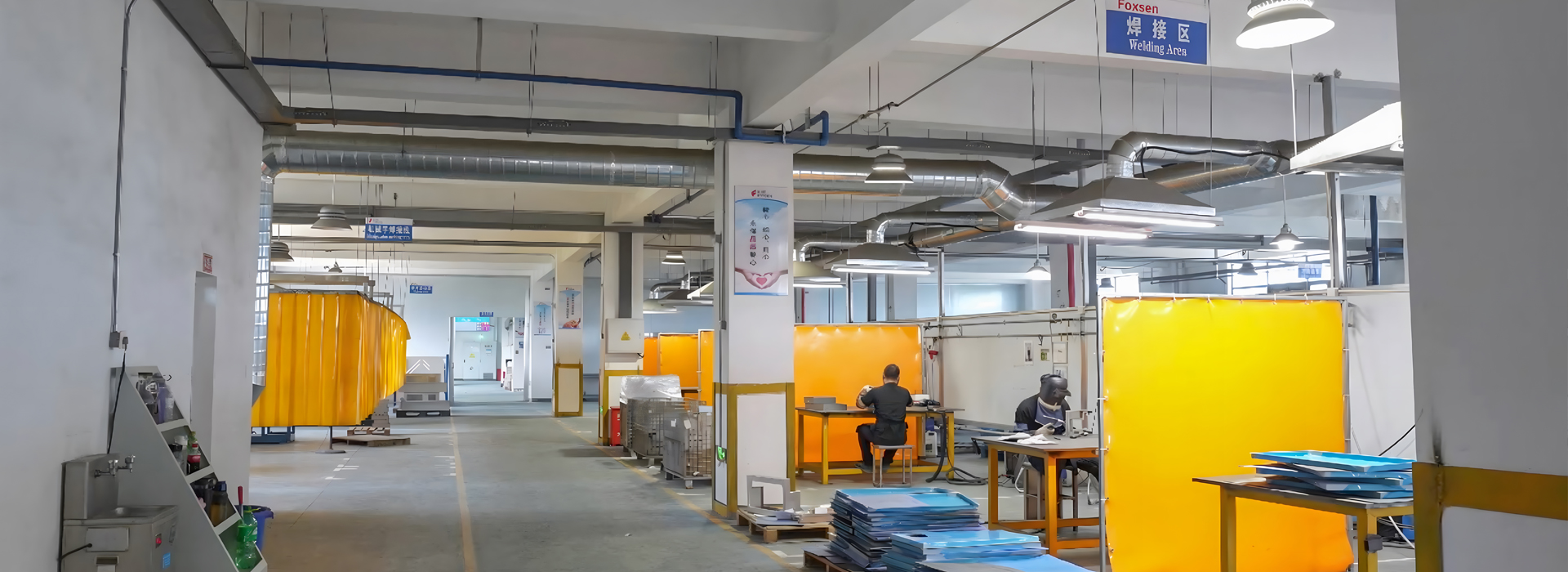Picking the right sheet metal case for medical devices is important.
It helps ensure the devices work well and last long.
I consider strength, usefulness, and cost when choosing.
Medical tools need to be safe and precise without fail.
Many materials allow makers to create cases for different uses.
Strong and flexible sheet metals help devices perform in tough situations.
As simple surgeries become common, perfect tools are needed more.
A clear guide can make choosing the best case easier.
Key Takeaways
Pick the right metal case to keep medical devices working well.
Think about the device's size, shape, and where it will be used.
Use strong materials like stainless steel or aluminum for safety.
Follow rules like ISO 13485 to meet safety standards.
Save money by using simple designs and buying in large amounts.
Define the Requirements

Check the Medical Device's Size and Shape
Start by looking at the device's size and shape. This makes sure the case fits well and works properly. Write down details like height, width, and inside parts. Follow steps like IQ, OQ, and PQ to check if the case meets rules. These steps help confirm the case works in the factory process.
Understand How It Works and Its Surroundings
Think about how the case will be used and where. Will it face cleaning often or strong chemicals? The environment matters too. A study in Niger showed water and air quality affect healthcare tools.
By solving these issues, the case helps the device and healthcare system work better.
Think About Strength and Long Use
The case must be strong and last long. Pick materials that handle cleaning, chemicals, and stay solid over time. For example, biocompatible materials don’t harm the body. Chemical-resistant ones don’t break during cleaning.
By focusing on these features, the case stays safe and useful for a long time.
Material Selection for Sheet Metal Housing

Picking the right material for medical device cases is important. It helps keep devices safe, strong, and working well. Materials must handle tough conditions and last a long time. Here are key things to think about when choosing materials.
Check Durability and Strength
The case must be strong and durable. It should handle stress, frequent use, and tough environments. Stainless steel, like grades 304 and 316L, is a great choice. It’s strong and doesn’t wear out easily. This makes it perfect for demanding situations.
Aluminum is another good option. It’s easy to shape and resists rust. Aluminum surfaces can repel bacteria, which helps keep things clean. This makes it useful for lightweight and strong cases.
Look at Corrosion Resistance and Safety Standards
Corrosion resistance is very important. Medical devices are cleaned often with strong chemicals and water. Stainless steel doesn’t rust and stays strong over time. It also meets safety rules like ISO 13485:2016, ensuring reliability.
Aluminum also resists corrosion well. It works great for tools like surgical instruments. Picking materials that meet these standards keeps devices safe and healthcare clean.
Think About Heat and Electricity Needs
Some devices get hot while working. The case material should spread heat to avoid overheating. Tests like thermal conductivity analysis help check this. This ensures the case supports the device safely.
For electricity, aluminum and some composites work well. They insulate while keeping the device efficient. By checking these needs, the case can improve how the device works overall.
Design Tips for Choosing the Best Case
Focus on Accuracy and Custom Features
When making sheet metal cases for medical tools, accuracy matters. The case must fit perfectly to protect parts and work well. Start by picking the right materials and methods. For example, laser cutting helps make exact shapes so everything fits.
Custom features make the case match the tool's needs. This could mean adding vents to cool it down or openings for repairs. The table below shows important things to think about for accuracy and custom designs:
By focusing on these, the case can be useful and look great.
Check if It Matches the Device
The case must work well with the medical tool. Start by checking the tool’s size, shape, and how it works. If the tool gets hot, the case should have vents to cool it.
Also, think about how the case handles cleaning and sterilizing. Materials like stainless steel 316L don’t rust and stay strong in tough conditions. Picking the right case keeps the tool safe and working well.
Make Assembly and Cleaning Simple
The case should be easy to put together and clean. Add features like panels or doors that open easily. This helps fix parts quickly and keeps the tool running.
Smooth surfaces and safe coatings make cleaning simple. They stop dirt and germs from building up. By planning for these, the case stays reliable and easy to use for a long time.
Compliance and Certifications
When picking sheet metal housing for medical devices, following rules is key. These rules make sure the housing is safe, meets standards, and protects patients. I always check this step to match global medical guidelines.
Learn About Medical Industry Rules (e.g., ISO, FDA)
Medical devices must follow strict rules to stay safe and work well. I focus on rules like ISO 14971, which explains how to manage risks for medical tools. This rule is accepted worldwide. Also, IEC 60601-1 works with ISO 14971 to stress safety during testing.
Following these rules helps the housing pass tough tests and meet demands from groups like the FDA. This step is a must for making housings for important medical tools.
Check Biocompatibility and Safety Needs
Biocompatibility means materials are safe for the body. I always pick materials that meet ISO 10993 rules. This ensures the housing is safe in medical settings and won’t cause harm.
ISO 13485 makes sure the quality system meets safety rules.
FDA rules require strict checks, including proper records and testing.
ISO 10993 is vital for parts that touch the body directly.
By checking these needs, I choose materials that are safe, strong, and fit for medical use. This also lowers risks during cleaning, sterilizing, and long-term use in healthcare.
Keep Records and Test Thoroughly
Good records and testing are very important. I always keep detailed records to show we follow rules and stay safe in emergencies. For example, keeping notes during production helps handle risks and offers legal proof.
Testing is just as important. I run many checks to see how the housing works in different conditions. This includes heat tests, rust checks, and strength tests. By mixing good records with strong testing, I make sure the housing is safe and reliable for medical use.
Cost and Supplier Evaluation in Buying a House
Balance Quality with Budget Limits
It’s important to balance quality and cost when buying a house for medical devices. I always check costs to ensure the housing works well without spending too much. Labor costs differ by location. For example, workers in Southeast Asia earn $4.4/hour, which is less than in the US or Europe. Modern machines, like laser cutters, cost a lot but make precise and efficient products. Starting costs for tools and setup, between $210 and $420 per set, also affect the budget.
Simpler designs can help save money. Complex designs need skilled workers, which raises costs. Choosing easier designs lowers expenses but keeps the housing useful. Ordering in bulk also helps. Large orders reduce the cost of each unit, making production cheaper overall.
Find and Check Reliable Suppliers
Finding good suppliers is key when choosing medical device housings. I start by looking for suppliers with experience in making sheet metal products. They must meet industry rules like ISO 13485. I also read reviews and feedback from other customers to see if they are trustworthy.
Visiting the supplier’s factory gives helpful information about their work. I check their machines, workers, and quality checks. Suppliers with advanced tools and skilled workers make better housings. I also prefer suppliers who can customize products. This is important for meeting the special needs of medical devices.
Think About Delivery Times and Growth
Delivery times and growth ability are important when picking a supplier. I check if they can deliver on time, even in emergencies. Suppliers using smart transport methods are more reliable for quick deliveries.
Growth ability matters too. I look at their production capacity, extra equipment, and stock of materials. These show if they can handle more orders without losing quality. A supplier who can grow ensures the housing is always available as demand increases.
By checking these points, I make sure the housing fits the device, stays affordable, and arrives on time.
Choosing the right sheet metal case for medical devices needs clear steps. This guide explains how to set needs, pick materials, and follow rules while managing costs. Each step helps the case work well and meet standards. Careful checks are important since hospitals now ask for proof of value and safety. Makers must share clear details to meet these needs. By using this guide, I make sure the case keeps the device safe and meets market and rule demands.
FAQ
What is the best material for medical device housings?
I suggest using stainless steel, especially grades 304 or 316L. These materials resist rust, last long, and meet medical rules. They handle frequent cleaning and sterilizing, making them great for healthcare use.
Tip: Check if the material meets ISO 13485 and biocompatibility rules.
How do I ensure the housing design fits my medical device?
First, measure the device’s size and note its needs. Custom designs are important. Work with suppliers who use precise tools like laser cutters for a perfect fit.
Key Considerations:
Parts inside must align properly
Add vents to manage heat
Make sure it’s easy to fix
Why is compliance with ISO 13485 important?
ISO 13485 ensures the housing is safe and meets global standards. It shows the process focuses on safety and reliability. Always pick suppliers who follow this rule.
Note: Following ISO 13485 makes it easier to get approvals worldwide.
How can I reduce costs without compromising quality?
To save money, keep the design simple and order in bulk. Simple designs cost less to make, and bulk orders lower the price per unit. Choose skilled suppliers with efficient methods to save more.
What factors should I consider when choosing a supplier?
Pick suppliers with experience in making medical-grade sheet metal. Look for ISO 13485 certification, advanced tools, and good reviews. Visiting their factory helps you see their quality checks.
Pro Tip: Choose a supplier who can handle bigger orders in the future.





